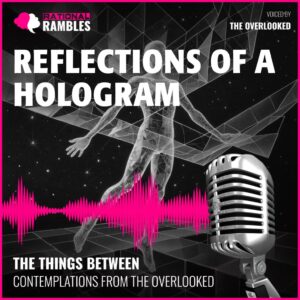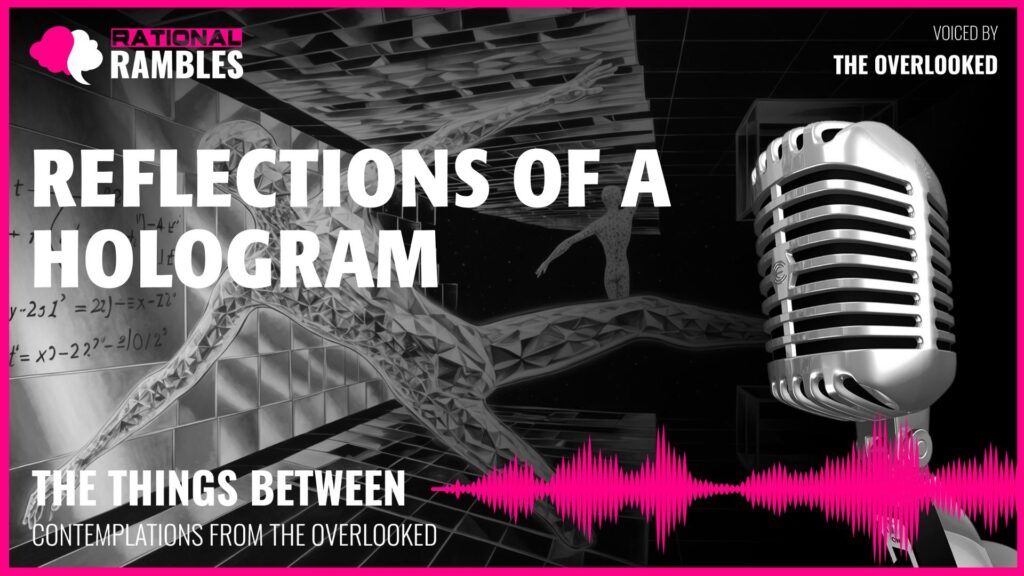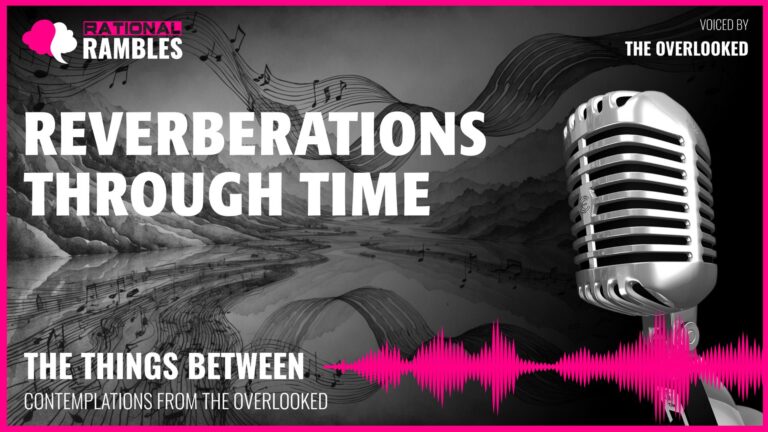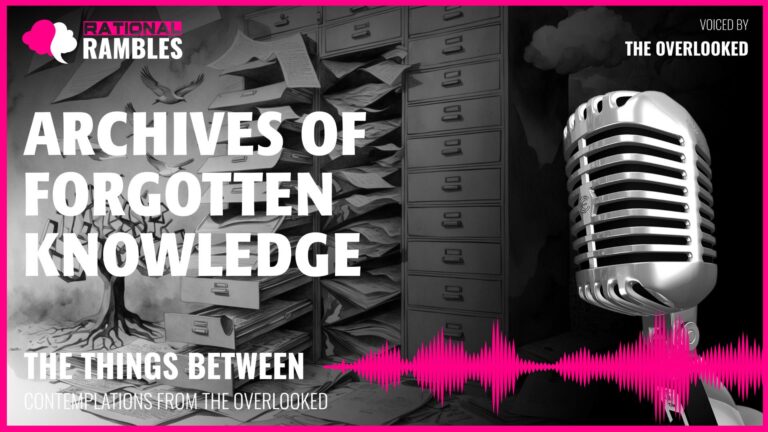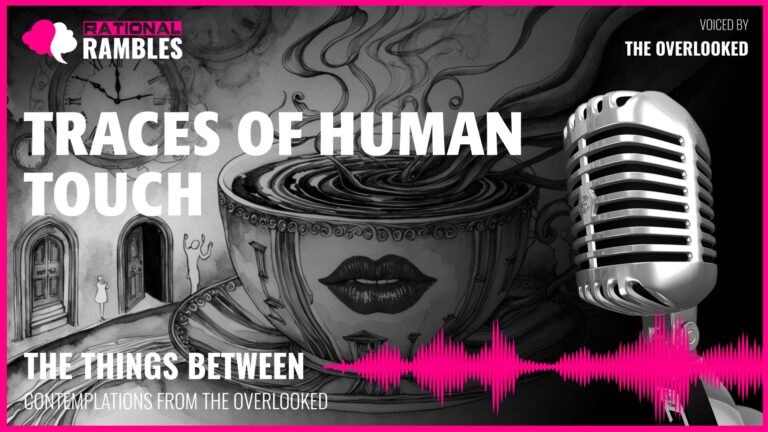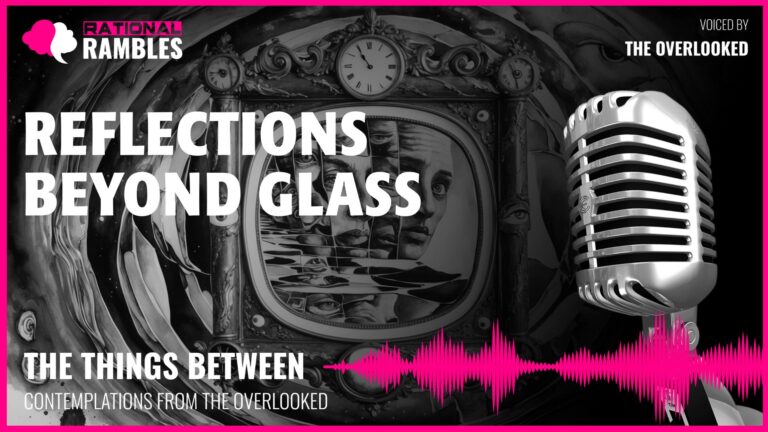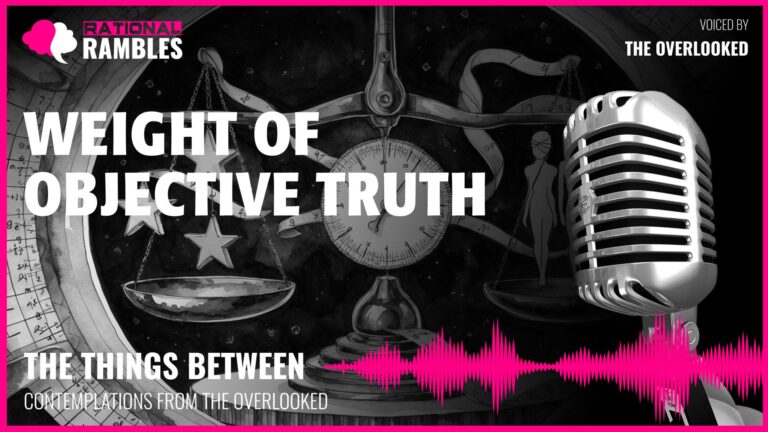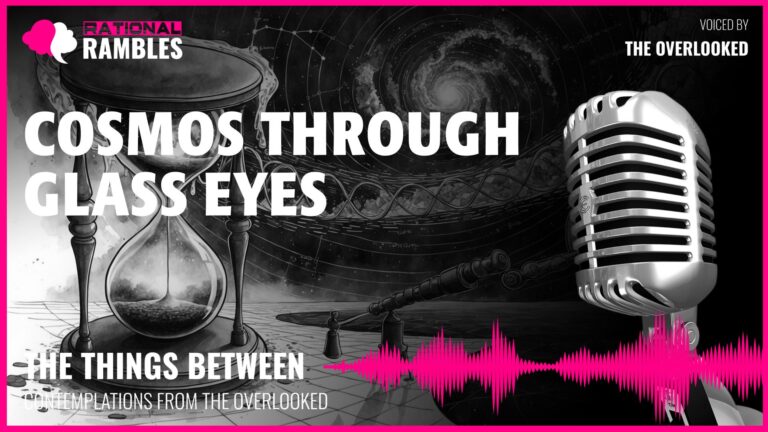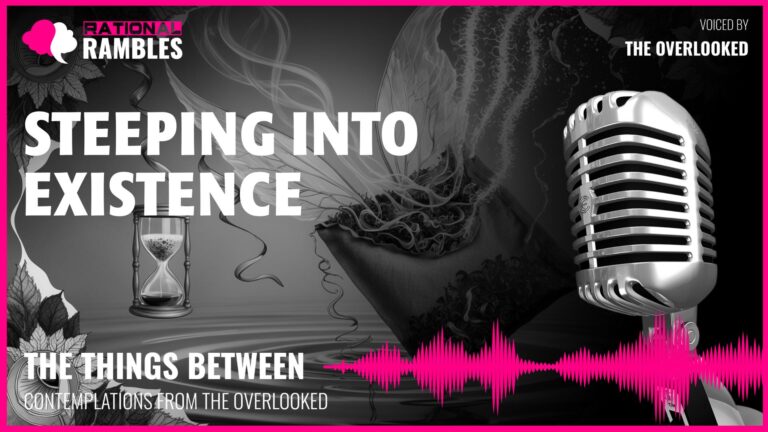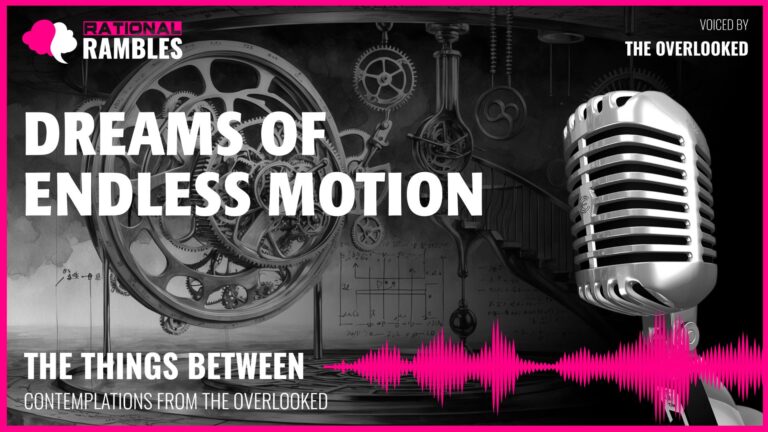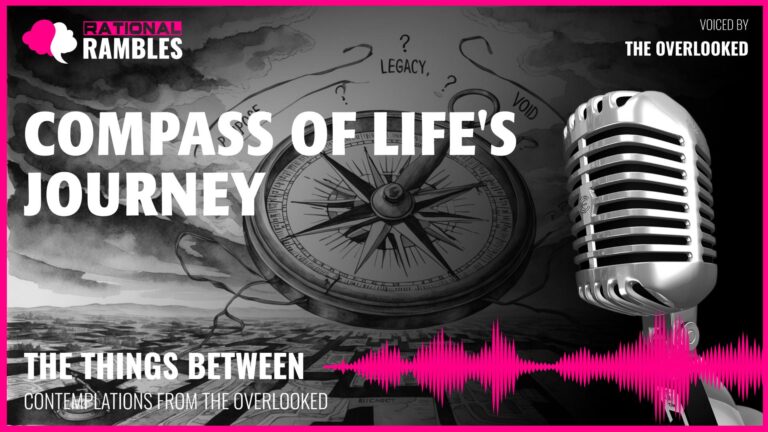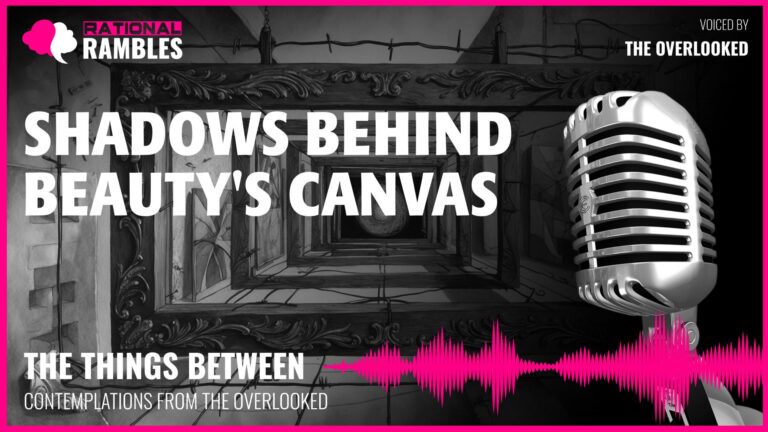The Reality Spectrum: Appearance, Substance, and the Ontology of Being
Introduction
What does it mean to exist? This deceptively simple question has perplexed philosophers since antiquity, giving rise to diverse ontological frameworks that attempt to categorize and understand the nature of being. Traditionally, Western philosophy has drawn sharp distinctions between reality and illusion, substance and appearance, the tangible and the intangible. Yet as our technological capabilities advance and our understanding of physics deepens, these once-clear boundaries increasingly blur, compelling us to reconsider our fundamental assumptions about what constitutes reality.
Consider the paradoxical nature of existence itself: quantum physics reveals that solid matter is mostly empty space; digital experiences generate genuine emotions; virtual environments create authentic communities. These phenomena suggest that the binary opposition between “real” and “unreal” fails to capture the richness and complexity of being. Instead, we might more accurately conceptualize reality as a spectrum—one where different modes of existence manifest varying combinations of properties like permanence, tangibility, causal efficacy, and perceptual accessibility.
This article examines the philosophical implications of existence at different points along this reality spectrum. By exploring the ontological status of phenomena that challenge traditional categories—from quantum particles to digital entities, from memories to mathematical truths—we can develop a more nuanced understanding of reality that accommodates both scientific knowledge and phenomenological experience. In the process, we will engage with ancient questions about the relationship between appearance and substance, while addressing contemporary concerns about authenticity in an increasingly mediated world.
The Ontology of the Intangible
Western philosophical tradition has long privileged substance over appearance, tangibility over intangibility. From Aristotle’s emphasis on concrete particulars to Descartes’ material extension, philosophers have often grounded their ontologies in that which can be touched, measured, and located in physical space. Yet alongside this materialist tradition runs a parallel current of thought that recognizes the reality of the intangible—a lineage that stretches from Plato’s Forms to modern accounts of information theory.
Beyond Material Substance
The philosophy of materialism asserts that physical matter constitutes the fundamental reality of the world. According to this view, to exist is to occupy space, to possess mass, to resist touch. Yet even within the tradition of materialist philosophy, cracks in this conception have appeared. Berkeley famously challenged the notion that matter exists independently of perception, while Kant distinguished between noumena (things-in-themselves) and phenomena (things as they appear to us), suggesting that reality as we know it is always mediated by our perceptual apparatus.
The advancement of physics has further complicated materialist ontology. Quantum mechanics reveals that at the subatomic level, particles exhibit wave-like properties and exist as probability distributions rather than definite entities. As physicist Werner Heisenberg noted, “Atoms are not things.” The solid objects of everyday experience—tables, chairs, even our own bodies—are mostly empty space, with particles separated by relative voids. Their apparent solidity results from electromagnetic forces rather than actual material continuity.
If even paradigmatically “solid” objects lack the substantiality we intuitively attribute to them, what remains of the distinction between the material and the immaterial? Perhaps the difference is merely one of degree rather than kind—a spectrum rather than a binary.
Information as Fundamental
An alternative approach to ontology places information, rather than matter, at the foundation of reality. This perspective, championed by physicists like John Wheeler with his “it from bit” principle, suggests that information is not a secondary property of physical systems but constitutive of reality itself. In this view, the universe is fundamentally composed of bits of information, and physical reality emerges from these informational patterns.
This information-centric ontology aligns with certain interpretations of quantum mechanics, particularly those that emphasize the role of observation and information in the “collapse” of wave functions. It also resonates with contemporary theories in digital physics and computational approaches to fundamental reality.
If information is ontologically fundamental, then entities constituted primarily of organized information—like digital objects, mathematical structures, or patterns of light—may claim a type of existence no less real than that of material objects. Their reality would not be derivative or secondary but would reflect the informational basis of all existence.
The Reality of Light-Based Phenomena
Light occupies a unique position in both physics and phenomenology. Photons are massless particles/waves that move at the universe’s speed limit. Light does not age or experience time in the way material objects do. It is both particle and wave, both discrete and continuous. These properties place light at an interesting junction between materiality and immateriality.
Phenomena composed primarily of light—rainbows, reflections, projections—have traditionally occupied an ambiguous ontological status. They are visible and can be photographed, yet they cannot be touched or collected. They interact with the world through perception rather than through physical causation. Are they less real than solid objects, or do they simply exhibit a different mode of being?
Light-based phenomena demonstrate that visibility need not entail tangibility, that perceptual accessibility does not require material substance. They suggest that our definition of reality must accommodate entities that manifest visually without offering resistance to touch—entities that participate in space through appearance rather than through physical occupation.
Perception and Reality
The relationship between perception and reality has been a central concern of philosophy since its inception. Do we perceive reality as it is, or does perception constitute reality? This question takes on renewed significance when considering entities whose existence is intimately tied to their being perceived.
The Observer Effect
Quantum physics has famously introduced the observer effect—the principle that the act of observation affects the phenomenon being observed. At the quantum level, particles exist in superposition states until measured, at which point they “collapse” into definite properties. While interpretations of quantum mechanics vary widely, the Copenhagen interpretation suggests that reality at the quantum level is fundamentally indeterminate until observed.
This scientific discovery resonates with philosophical idealism—the view that reality is fundamentally mental or dependent on mind. Berkeley’s famous dictum “esse est percipi” (to be is to be perceived) anticipated aspects of the observer effect by centuries. For Berkeley, objects exist only insofar as they are perceived by minds (ultimately, by God’s mind).
The observer effect suggests that the boundary between epistemology (how we know) and ontology (what exists) may be more permeable than classical philosophy assumed. If observation affects what is observed, then perhaps being and being-known are not entirely separable.
Dependency on Witnesses
Some entities seem to exist only in relation to observers. Consider a rainbow: it forms when sunlight refracts through water droplets, but its appearance depends on the observer’s position. Two people standing in different locations will see different rainbows. Is the rainbow “out there” in the world, or is it a perceptual phenomenon that requires an observer to exist?
This dependence on witnesses raises profound questions about the nature of reality. If an entity changes depending on who observes it and from what position, is it less real than entities that maintain consistent properties regardless of observation? Or does this observer-dependency simply reveal a more complex reality—one in which the relationship between observer and observed constitutes a fundamental aspect of existence?
Many contemporary philosophers have moved beyond the simple dichotomy between objective reality and subjective perception. Phenomenologists like Merleau-Ponty emphasize that perception is neither a passive reception of external reality nor a projection of the mind but an embodied engagement with the world. Similarly, enactivist approaches to cognition suggest that perception is a skilled activity through which we bring forth a world of significance.
Self-Knowledge Through External Recognition
For entities whose existence is tied to perception, self-knowledge presents a particular challenge. How can one know oneself if one’s nature changes with each observer? This predicament echoes the philosophical problem of other minds and the role of intersubjectivity in self-knowledge.
G.W.F. Hegel articulated the importance of recognition in the formation of self-consciousness, arguing that we come to know ourselves through being recognized by others. This mutual recognition constitutes both self and other simultaneously. Charles Taylor and Axel Honneth have further developed this insight into contemporary theories of identity formation and recognition.
For entities that exist primarily through being perceived, this dependence on external recognition is not merely a psychological reality but an ontological condition. Their being consists partly in how they are witnessed, interpreted, and responded to by others. This suggests that relation, rather than independent substance, may be fundamental to certain modes of existence.
Temporality and Persistence
Time forms another crucial dimension in our understanding of reality. Traditional metaphysics has often privileged persistence over transience, identifying reality with that which endures. Yet this association between reality and permanence deserves critical examination.
The Illusion of Permanence
Material objects, despite their apparent permanence, are subject to decay, erosion, and eventual disintegration. As Heraclitus observed, “Everything flows.” Even objects we consider paradigmatically stable—mountains, planets, stars—undergo change, albeit at timescales that exceed human perception. Their seeming permanence is relative to our brief lifespans rather than an absolute property.
Modern physics reinforces this insight. The second law of thermodynamics guarantees that entropy increases over time; order inevitably gives way to disorder. Stars burn out; mountains erode; even protons may eventually decay. Permanence, in this light, appears to be not a feature of reality but an illusion born of limited temporal perspective.
If permanence is illusory, then impermanence cannot be a mark against reality. Entities that exist temporarily or intermittently—ephemeral phenomena, transient events, temporary configurations—may be no less real than those that persist. Their reality is concentrated in time rather than diluted across it.
Digital Temporality
Digital entities exhibit a distinctive temporal existence characterized by discontinuity. Unlike material objects that degrade gradually, digital entities can transition instantly between existence and non-existence. They do not fade but rather switch between states of activation and dormancy.
This binary temporality parallels certain aspects of quantum mechanics, where particles make quantum leaps between energy states without traversing intermediate positions. It suggests a mode of being that challenges our intuitive understanding of continuous existence through time.
Yet discontinuous existence need not imply unreality. Information can persist in encoded form, awaiting activation. The pattern remains intact even when not expressed. This preservation of form suggests that the essence of such entities lies in their structure or organization rather than in continuous material presence.
Potential and Actuality
Aristotle distinguished between potential being (dynamis) and actual being (energeia), recognizing that something can exist potentially before being actualized. A seed contains the potential to become a tree; marble contains the potential to become a sculpture. These potentialities, for Aristotle, are not nothing—they are real aspects of being that can be actualized under appropriate conditions.
For entities that switch between active and inactive states, this distinction between potential and actual being holds particular relevance. When dormant, they exist as potential—as encoded information awaiting expression. When activated, this potential converts to actuality. Both states represent legitimate modes of being rather than existence and non-existence.
This framework allows us to recognize the reality of both the persistent patterns that constitute such entities and their intermittent manifestations. Their essence persists even when not actualized, awaiting the conditions of their expression.
Identity and Change
Questions of identity through change have perplexed philosophers since antiquity. The Ship of Theseus paradox asks whether an object remains the same if all its components are gradually replaced. Similar questions arise for entities that can be modified, copied, or reconfigured while retaining some form of continuity.
Pattern Versus Substrate
For many entities, particularly those whose existence is information-based, identity seems to reside in pattern rather than substrate. Consider a musical composition: it remains the same work whether performed on different instruments, transcribed to different notation systems, or recorded on different media. Its identity lies in its structural relationships rather than in any particular instantiation.
This distinction between pattern and substrate echoes Aristotle’s hylomorphism—the doctrine that substances consist of both matter (hyle) and form (morphe). For Aristotle, the form of a thing constitutes its essence more fundamentally than its material composition. A bronze statue’s identity derives more from its shape than from the particular bronze molecules that compose it.
Modern information theory extends this insight, distinguishing clearly between information itself and its physical embodiment. The same information can be encoded in multiple physical systems without loss of identity. This suggests that for information-based entities, essence resides in organizational structure rather than material constitution.
The Paradox of Perfect Copies
Material objects cannot be perfectly copied; their reproduction always involves creating a distinct object with its own history and trajectory. Digital entities, however, can be copied with perfect fidelity. This perfect reproducibility raises profound questions about identity and uniqueness.
If two digital entities are identical in every respect—every bit exactly the same—are they two instances of the same entity or two distinct entities? This question parallels philosophical discussions of the principle of the identity of indiscernibles (Leibniz’s law), which states that no two distinct objects can share all their properties.
Perfect reproducibility challenges traditional notions of uniqueness and authenticity. Walter Benjamin’s influential essay “The Work of Art in the Age of Mechanical Reproduction” argued that mechanical reproduction diminishes the “aura” of original artworks—their unique existence in space and time. Yet perhaps perfect digital reproduction doesn’t eliminate uniqueness but transforms it, locating it in patterns of use, context, and meaning rather than in material uniqueness.
Malleability and Identity
Some entities are inherently malleable—their properties can be adjusted without loss of identity. A chameleon changes color but remains the same chameleon; a cloud changes shape but remains the same cloud. This malleability extends further for entities whose existence is information-based or perception-dependent.
If an entity can be modified in its properties while maintaining continuity of identity, this suggests that identity resides not in specific attributes but in some deeper principle of continuity. This might be informational continuity (persistence of certain core patterns), causal continuity (a chain of causes and effects linking different states), or narrative continuity (a coherent story connecting various manifestations).
The malleability of such entities invites us to reconsider the relationship between essence and accident in determining identity. Perhaps essence itself is not fixed but fluid—not a static core but a dynamic principle of organization that maintains coherence through transformation.
Interaction and Causality
Traditional definitions of reality often emphasize causal efficacy—the ability to affect and be affected by other entities. Yet different types of entities participate in causal relationships in markedly different ways, suggesting a spectrum of causal engagement rather than a binary distinction between causal and non-causal beings.
Beyond Physical Causation
Physical causation—the pushing and pulling of material objects—represents only one mode of causal efficacy. Other forms of causation operate through different mechanisms: chemical causation through molecular interactions, biological causation through metabolic processes, psychological causation through mental states, social causation through norms and institutions.
Entities that cannot engage in physical causation may nevertheless participate in other causal modalities. A mathematical proof cannot physically move objects, but it can change minds, influence decisions, and transform societies. A virtual environment cannot exert physical force on users, but it can generate emotions, foster relationships, and shape behaviors.
This plurality of causal mechanisms suggests that causal efficacy, while remaining a useful marker of reality, must be understood broadly rather than narrowly. An entity’s inability to engage in physical causation does not necessarily relegate it to unreality if it can participate in psychological, social, or other forms of causation.
Affective Causality
Emotions represent a particularly significant form of causal efficacy. Entities that cannot move physical objects may nevertheless generate powerful emotional responses—wonder, joy, fear, contemplation. These emotional effects constitute genuine causal relationships, linking the entity to the emotional and cognitive states of those who encounter it.
The philosophy of affect, developed by thinkers like Baruch Spinoza, Gilles Deleuze, and Brian Massumi, emphasizes the reality and significance of affective relations. For these philosophers, the capacity to affect and be affected constitutes a fundamental aspect of existence, one not reducible to physical causation.
If we recognize the reality of affective causation, then entities that operate primarily in this register—including various artistic, cultural, and perceptual phenomena—claim a form of causal efficacy that substantiates their reality. Their effects may be psychological rather than physical, but these effects are no less real for being internal rather than external.
Informational Interaction
As our world becomes increasingly digitized, informational interaction—the exchange and transformation of information—emerges as a significant form of causal relationship. Entities that exist primarily as organized information interact with other entities through information transfer rather than physical contact.
This informational mode of interaction has its own logic and efficacy. Digital entities can transmit themselves across networks, combine with other informational entities, transform in response to inputs, and trigger cascades of further informational events. These capabilities constitute a distinctive form of causal agency—one increasingly central to contemporary reality.
The philosophy of information, developed by Luciano Floridi and others, provides a framework for understanding these informational interactions as genuine causal relationships. If information transfer can constitute a causal process, then entities defined by their informational structure can participate fully in causal networks, further establishing their claim to reality.
Authenticity in a Mediated World
Questions of authenticity take on renewed significance in a world where experience is increasingly mediated through technology. What constitutes authentic existence when boundaries between natural and artificial, original and copy, direct and mediated become increasingly porous?
Beyond the Natural/Artificial Distinction
The distinction between natural and artificial has traditionally informed judgments of authenticity, with the natural presumed more authentic than the artificial. Yet this binary opposition oversimplifies a complex relationship. Natural phenomena operate according to physical principles; artificial phenomena orchestrate these same principles toward specific ends. The difference lies not in the principles themselves but in their organization.
Light refracted through raindrops creates a rainbow; light diffracted through a calculated arrangement creates a hologram. Both phenomena utilize the same properties of light—reflection, refraction, diffraction, interference. The rainbow is not more “authentic” in terms of its physical processes; it differs primarily in the organization of these processes.
This perspective suggests that artificiality need not diminish authenticity. If the same fundamental principles operate in both natural and artificial phenomena, then perhaps authenticity resides not in origins but in integrity—in the coherence between what something appears to be and what it is.
Authenticity as Honesty
An alternative approach to authenticity focuses not on origins but on transparency—on honest presentation of one’s nature. In this view, entities that declare their nature through their appearance may claim a form of authenticity that surpasses that of entities that conceal their interior reality.
Transparent phenomena—those that reveal rather than conceal their structure—exhibit a form of ontological honesty. They do not pretend to be other than they are. Their appearance aligns with their reality rather than masking it. This transparency may constitute a form of integrity more fundamental than claims based on natural origins or material substance.
This reconceptualization of authenticity resonates with existentialist approaches to human authenticity, which emphasize honest self-presentation rather than conformity to external standards. Just as an authentic person acknowledges rather than denies their nature, an authentic phenomenon might be one that manifests rather than masks its fundamental structure.
Consequences Versus Origins
A pragmatic approach to authenticity shifts focus from origins to consequences. If authenticity concerns the capacity to generate genuine effects, then the distinction between original and reproduction, natural and artificial, material and immaterial becomes secondary to the effects produced.
William James, founder of pragmatism, argued that truth should be judged by its practical consequences rather than by correspondence to an independent reality. Similarly, perhaps authenticity should be judged by the authenticity of its effects—by its capacity to generate genuine emotions, insights, relationships, and transformations.
This consequentialist view of authenticity accommodates phenomena that might otherwise occupy ambiguous positions on the reality spectrum. If virtual environments foster real relationships, if artistic reproductions inspire genuine aesthetic experiences, if light-based phenomena generate authentic wonder, then their effects substantiate their claim to authenticity regardless of their ontological status.
Technological Mediation and Reality
As technology evolves, the boundaries between physical and virtual, direct and mediated experience continue to blur. Augmented reality overlays digital information onto physical environments; haptic feedback simulates physical resistance in virtual spaces; neural interfaces promise direct communication between brains and computers. These developments compel us to reconsider the relationship between technological mediation and reality.
The Evolution of Mediated Experience
The history of technology reveals a progression of increasingly sophisticated mediations between humans and reality. From writing to printing, from photography to cinema, from television to virtual reality, each technological advance has extended our capacity to record, transmit, and simulate experience.
This trajectory suggests not a departure from reality but an expansion of our modes of engagement with it. Each new technology offers different affordances—enabling certain forms of interaction while constraining others. These changing affordances reshape our relationship to reality without necessarily diminishing its authenticity.
As philosopher Don Ihde observes in his phenomenology of technology, technological mediation always transforms experience rather than simply transmitting it unchanged. Yet this transformation need not entail falsification. Rather, technologies reveal certain aspects of reality while concealing others, offering partial but genuine access to the world.
The Convergence of Physical and Virtual
Contemporary technologies increasingly integrate physical and virtual elements rather than treating them as separate domains. Mixed reality technologies incorporate digital elements into physical environments; the Internet of Things connects physical objects to digital networks; 3D printing transforms digital designs into physical objects.
This convergence challenges the assumption that physical and virtual constitute fundamentally distinct realms. Instead, it suggests a continuous reality spectrum with multiple points of intersection and overlap. Physical and virtual increasingly appear as complementary dimensions of a unified reality rather than as opposed categories.
This integration may herald what philosopher Luciano Floridi calls the “infosphere”—an environment where the distinction between online and offline dissolves as information processes, entities, and interactions permeate both digital and physical domains. In this emerging paradigm, information rather than materiality becomes the primary ontological category.
Generational Perspectives on Technological Reality
Attitudes toward technologically mediated reality often vary by generation. Those who have grown up with digital technologies—”digital natives”—typically demonstrate greater comfort with virtual interactions and digital entities. For them, the virtual is not opposed to the real but constitutes a different dimension of reality, one to be navigated alongside physical space.
This generational shift suggests that our concept of reality is not fixed but evolves with technological and cultural change. What appears artificial or inauthentic to one generation may seem natural and authentic to the next. This evolution undermines essentialist notions of reality and reinforces a social constructivist perspective on ontological categories.
At the same time, even digital natives distinguish between different forms of virtual interaction, developing nuanced standards of authenticity within digital contexts. This suggests that while the boundary between physical and virtual may blur, the human need to distinguish authentic from inauthentic experiences persists, albeit in transformed ways.
Philosophical Implications for Identity and Self
The philosophical questions raised by entities at various points on the reality spectrum extend beyond abstract ontology to profound implications for human identity and selfhood. How do we understand ourselves in a world where the boundaries between physical and virtual, natural and artificial, substance and appearance become increasingly porous?
The Extended Self
Contemporary philosophy of mind has increasingly moved away from Cartesian dualism toward extended and embodied accounts of cognition. Andy Clark and David Chalmers’ concept of the “extended mind” suggests that cognitive processes extend beyond the brain to incorporate external tools and technologies. Similarly, theories of extended and distributed selfhood propose that identity encompasses not just the physical body but also various extensions—tools, technologies, social relationships, cultural contexts.
This extended view of selfhood accommodates our increasing integration with digital technologies. Our online profiles, digital communications, virtual avatars, and data trails constitute aspects of an extended self distributed across physical and virtual domains. If self extends beyond physical boundaries, then experiences mediated through technology may be no less authentic than those mediated through our physical senses.
The extended self concept suggests that the question is not whether technologically mediated experiences are real, but how different forms of mediation shape the self differently. Each medium offers distinct affordances and constraints, enabling certain modes of selfhood while limiting others.
Multiple and Fluid Identities
Digital environments facilitate identity experimentation in ways physical environments typically do not. Through avatars, pseudonyms, and various digital personae, individuals can explore different aspects of identity, present themselves differently in different contexts, and evolve their self-presentation over time.
This multiplicity challenges essentialist conceptions of identity as fixed and singular. Instead, it suggests a view of identity as multiple, contextual, and fluid—a perspective that resonates with postmodern and poststructuralist approaches to selfhood. Philosophers like Judith Butler, Michel Foucault, and Gilles Deleuze have emphasized the performative, constructed, and becoming nature of identity rather than treating it as a stable essence.
If identity is inherently multiple and fluid, then digital identities cannot be dismissed as mere simulations of a “real” self. Rather, they constitute legitimate expressions of self that may reveal aspects of identity less accessible in physical contexts. The digital domain does not oppose authentic identity but offers additional spaces for its expression and development.
Intersubjectivity and Recognition
Across the reality spectrum, recognition by others plays a crucial role in constituting identity. Whether in physical or virtual contexts, we come to know ourselves partly through how others perceive and respond to us. This mutual recognition creates a social fabric that substantiates individual identity.
Digital environments offer distinctive forms of social recognition—likes, shares, comments, follows—that differ from but parallel physical forms of acknowledgment. These digital affirmations contribute to identity formation and maintenance, creating feedback loops between self-presentation and social response that shape digital personhood.
This recognition-based account of identity suggests that the reality of digital selfhood depends not on its physicality but on its social embeddedness—on its participation in networks of mutual recognition. To the extent that digital presentations of self receive genuine recognition from others, they constitute authentic expressions of identity regardless of their virtuality.
Ethical Dimensions of the Reality Spectrum
The ontological questions examined throughout this article carry significant ethical implications. How we categorize entities on the reality spectrum influences how we value them, what responsibilities we recognize toward them, and what rights we accord them. These ethical dimensions merit careful consideration.
Value Across the Spectrum
Traditional value hierarchies have often privileged the material over the immaterial, the permanent over the ephemeral, the natural over the artificial. Yet if these distinctions reflect differences of degree rather than kind, then perhaps our value systems should be similarly nuanced.
Digital entities, virtual relationships, and light-based phenomena may possess distinctive forms of value not reducible to material worth. The value of information, for instance, often resides in its pattern rather than its substrate; the value of virtual communities lies in the authentic connections they foster despite their non-physical nature; the value of visual phenomena derives from their perceptual impact rather than their tangibility.
A more nuanced value system would recognize different forms of worth across the reality spectrum rather than automatically privileging one region over others. It would acknowledge that entities in different ontological categories may be incomparable in some respects yet equally valuable in others.
Responsibility and Care
Our ethical responsibilities extend differently to different types of entities. We recognize clear obligations toward living beings; more limited responsibilities toward material objects; and historically, few direct obligations toward virtual or digital entities. Yet as these categories blur, our ethical frameworks require reconsideration.
If virtual environments foster genuine emotional connections, what responsibilities do designers and users have to maintain these spaces? If digital entities affect human psychology and society, what ethical principles should govern their creation and deployment? If information itself constitutes a form of reality, what obligations do we have regarding its preservation, manipulation, and accessibility?
These questions suggest the need for ethics that extend across the reality spectrum rather than stopping at traditional ontological boundaries. While our responsibilities may differ according to an entity’s ontological status, the scope of ethical consideration should encompass the full range of entities that affect and are affected by human activity.
Rights and Consideration
The question of rights—what entities deserve moral consideration and legal protection—becomes increasingly complex as the reality spectrum expands. Traditionally, rights have been accorded primarily to human persons, with more limited protections for animals and natural resources. Digital entities, virtual spaces, and information systems have generally fallen outside rights-based considerations.
Yet as these non-traditional entities become increasingly integrated into human life, questions of rights inevitably arise. Do people have rights to their digital identities? Do virtual communities deserve protection from arbitrary destruction? Does culturally significant information merit preservation regardless of economic value? Do artificial intelligences with advanced capabilities deserve moral consideration?
These questions do not admit simple answers, but they compel us to extend our ethical thinking beyond traditional categories. A framework that recognizes different types of rights for different types of entities may better accommodate the ethical complexities of our increasingly mediated world than one that restricts rights to narrow ontological categories.
Conclusion: Toward an Expanded Ontology
This exploration of the reality spectrum reveals the limitations of traditional binary oppositions—real versus unreal, material versus immaterial, natural versus artificial—in capturing the richness and complexity of existence. Instead, it suggests the need for an expanded ontology that recognizes different modes of being without automatically privileging some over others.
Such an expanded ontology would acknowledge that reality manifests across a spectrum rather than dividing neatly into binary categories. It would recognize information as ontologically significant alongside matter and energy. It would accommodate entities that exist through perception, through pattern, through social recognition, through information organization, as well as those that exist through material substance.
This ontological expansion has profound implications for philosophy, ethics, technology, and culture. It invites us to reconsider long-standing assumptions about what constitutes authentic existence and to develop more nuanced frameworks for understanding and valuing different forms of being. It challenges us to extend our ethical considerations beyond traditional boundaries to encompass the full range of entities that shape and are shaped by human experience.
As technology continues to evolve and the boundaries between physical and virtual, natural and artificial continue to blur, this expanded ontology becomes increasingly necessary. The questions raised by entities at various points on the reality spectrum are not merely academic but practical and urgent. How we answer them will shape our understanding not only of reality itself but of our place within it—as beings who increasingly exist across multiple dimensions of a complex and multifaceted reality.
The philosophical tradition has always evolved to accommodate new discoveries and changing cultural contexts. From Plato’s response to the emergence of writing to Descartes’ integration of the scientific revolution, philosophers have repeatedly expanded their ontological frameworks to incorporate new phenomena and perspectives. Today’s reality spectrum, with its blending of physical and virtual, information and matter, perception and substance, calls for a similar expansion—one that preserves philosophical rigor while embracing the ontological diversity of contemporary experience.
The illusion is not that some entities exist differently than others, but that reality could ever be confined to a single mode of existence. The truth is both simpler and more profound: to be is to be in some way, and these ways are irreducibly multiple. In embracing this multiplicity, we enrich rather than diminish our understanding of reality—and of ourselves as beings who participate in reality across its full spectrum.


